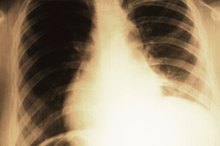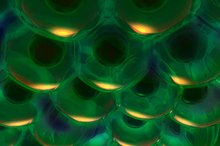What does fact checked mean?
At Healthfully, we strive to deliver objective content that is accurate and up-to-date. Our team periodically reviews articles in order to ensure content quality. The sources cited below consist of evidence from peer-reviewed journals, prominent medical organizations, academic associations, and government data.
- The Journal of Occupational Medicine and Toxicology: Clinical consequences of asbestos-related diffuse pleural thickening: A review
- The Journal of Occupational Medicine and Toxicology: Clinical consequences of asbestos-related diffuse pleural thickening: A review
The information contained on this site is for informational purposes only, and should not be used as a substitute for the advice of a professional health care provider. Please check with the appropriate physician regarding health questions and concerns. Although we strive to deliver accurate and up-to-date information, no guarantee to that effect is made.
What Is Apical Pleural Thickening?
Apical pleural thickening refers to pleural thickening of the apical portion of the lungs 12. The apical portion, or apices, of the lung is the rounded top portion of the lung.
If you are experiencing serious medical symptoms, seek emergency treatment immediately.
Features
The lungs are covered by two thin layers of tissue. These layers are known as the pleura. The pleura may become hardened and lose it elasticity due to infection or by some other disease process such as mesothelioma or asbestosis.
Significance
What Causes Hardening of the Lungs?
Learn More
When the pleural layers become hardened it becomes increasingly difficult to breathe due to restricting the lungs ability to expand during inhalation.
Symptoms
Symptoms of apical pleural thickening are similar to other respiratory disease processes. They include shortness of breath, chest pain and difficulty breathing during exercise.
Causes
Atelectasis Vs. Scarring
Learn More
There are many causes for apical pleural thickening as it is a result of any inflammation in the lungs. Some causes included; bacterial pneumonia, chemotherapy, infection and lupus. Lupus is a key factor as it causes inflammation to so many body tissues.
Treatment
Treatment for apical pleural thickening can only be treated surgically as the hardened areas of the lungs are scar tissue and will need to be removed. Thus relieving the pressure off the lungs allowing them to expand freely.
Related Articles
References
- All About Malignant Mesothelioma: Pleural Thickening
- The Journal of Occupational Medicine and Toxicology: Clinical consequences of asbestos-related diffuse pleural thickening: A review
- Charalampidis C, Youroukou A, Lazaridis G, et al. Pleura space anatomy. J Thorac Dis. 2015;7(Suppl 1):S27-32. doi: 10.3978/j.issn.2072-1439.2015.01.48
- Jany B, Welte T. Pleural Effusion in Adults-Etiology, Diagnosis, and Treatment. Dtsch Arztebl Int. 2019;116(21):377-386. doi:10.3238/arztebl.2019.0377
- U.S. National Library of Medicine. Medline Plus. Pleural Disorders. Updated 02/07/19.
Writer Bio
Tim Barron has been in Navy Medicine for 18 years as a radiology technician a histology technician and as a department manager. He graduated radiology technician school in 1993. He then attended the much-heralded Armed Forces Institute of Pathology and graduated in 1999.







